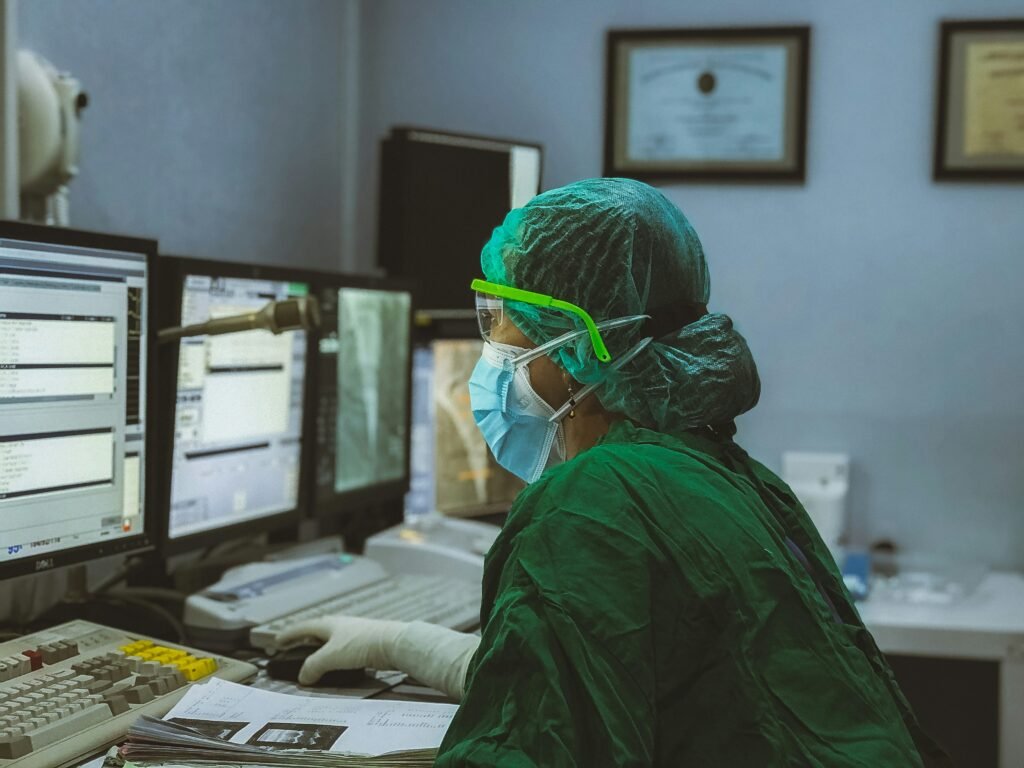Imagine waking up one day, and something as simple as breathing or raising your arm feels like a monumental task. That’s the reality for someone living with the causes of Superior Vena Cava Syndrome (SVCS).
SVCS is a condition where the body’s second-largest vein, the superior vena cava, becomes compressed or obstructed. This vein is a crucial highway for blood returning to the heart from the upper body. When it’s blocked, blood flow slows down, leading to swelling, shortness of breath, and even life-threatening complications.
But how does such a vital vein get blocked? The answer often lies in the shadow of cancer, with lung cancer and non-Hodgkin lymphoma being the primary culprits. However, it’s not just cancer that can trigger SVCS; even something as routine as a catheter can cause this serious condition.
Today, we’re here to closely examine all potential causes of Superior Vena Cava Syndrome (SVCS), be it cancerous or non-cancerous. Let’s get started.
Superior Vena Cava – The Second Largest Vein in Our Body
Did you know that the superior vena cava (SVC) is a central figure in your body’s circulatory system? Picture it as a highway reserved for the blood that’s traveled through your head, neck, arms, and chest, carrying it back to the heart.
Cleveland Clinic notes that this large vein is about 7 centimeters long and 2 centimeters wide. The SVC is formed by the union of two large veins, the left and right brachiocephalic veins.
Positioned behind your breastbone, beside your windpipe, the SVC directs this deoxygenated blood straight into the right atrium of your heart, ready for reoxygenation.
Wondering what makes the SVC so essential? Well, it’s the vein’s role in maintaining efficient blood flow. Therefore, if this vein were to get blocked or compressed, the deoxygenated blood would struggle to return to the heart.
It’s for this reason that the SVC is not just another vein. It’s a key player in keeping your blood circulating smoothly and your body functioning at its best. Without the superior vena cava doing its job, everything from your breathing to your brain function could be impacted.
Lung Cancer – The Primary Cause of SVCS
Lung cancer is a formidable disease that begins in the lungs and can quickly spread to other parts of the body. The American Cancer Society notes that lung cancer is of two types: non-small cell type (NSCLC) and small cell type (SCLC).
NSCLC is more common, accounting for about 80-85% of cases. It’s further divided into 3 subtypes: large-cell carcinoma, adenocarcinoma, and squamous-cell carcinoma. SCLC, though less common, is more aggressive and tends to grow and spread much faster than its counterpart.
When it comes to Superior Vena Cava Syndrome (SVCS), small cell lung cancer (SCLC) is often the primary culprit. This type of lung cancer frequently develops near the central airways, close to the superior vena cava.
As the tumor grows, it can press against the SVC, leading to obstruction and the onset of SVCS symptoms. The aggressive nature of SCLC makes it more likely to invade nearby structures, including this vital vein, causing complications that require immediate medical attention.
Non-Hodgkin Lymphoma – Another Cancer Associated with SVCS
While lung cancer is one of the major Causes of Superior Vena Cava Syndrome (SVCS) SVCS, there is another type of cancer that is also linked with the condition. We’re talking about non-Hodgkin lymphoma (NHL).
Beginning in the lymphatic system, NHL is a type of blood cancer that attacks your immune system directly. According to Mayo Clinic, NHL is characterized by the absence of Reed-Sternberg cells. This is what sets it apart from Hodgkin lymphoma, which is another type of lymphoma.
It can occur in various lymph nodes throughout the body and is further categorized based on the type of lymphocyte involved.
Given the proximity of the lymphatic system to the SVC, NHL can easily become a cause of this potentially life-threatening syndrome. As these lymph nodes swell or tumors grow, they can exert pressure on the superior vena cava, obstructing blood flow and leading to SVCS.
The Non-Cancerous Causes of SVCS
While cancer is a leading cause of Superior Vena Cava Syndrome (SVCS), non-cancerous factors can also trigger this condition.
When these devices are inserted into the chest, they can sometimes cause blood clots that obstruct the superior vena cava. Infections surrounding these devices can also lead to swelling and compression of this vital vein.
These issues, though less common than cancer, can still lead to the development of SVCS, necessitating prompt medical attention.
Other Potential Risks of Intravenous Catheters
Intravenous Catheters are considered a secondary cause of SVCS, mainly because the link between the two is rarely observed in SVCS patients. However, there are other risks associated with catheters that have a higher likelihood of occurrence.
Take Bard Power Port catheters, for instance. TorHoerman Law notes that the catheters from this particular brand have defects that can result in injuries and other health complications.
Some of the commonly occurring complications include catheter fracture and migration, as well as damaged blood vessels or veins. Other – although rare but serious – complications are arterial puncture, stroke, hemothorax, and pulmonary embolism.
Those who have used the catheters and suffered complications later have filed a Bard Power Port Lawsuit against its manufacturers. Their claim is that they weren’t informed of the defects in the device, for which they deserve compensation.
Frequently Asked Questions (FAQs)
What tumor is associated with superior vena cava syndrome?
According to EMedicine, 80% of the patients who suffer from SCVS have malignant mediastinal tumors present in their bodies. However, among the non-malignant medical conditions that can lead to this disease are mediastinal fibrosis, vascular diseases, and infections like histoplasmosis, tuberculosis, and syphilis.
How can you diagnose superior vena cava syndrome?
The diagnosis of SCVS involves imaging tests like a CT scan, MRI, chest X-ray, or ultrasound. The common symptoms of the SVCS include swelling in the neck or face, chest pain, or bluish skin. You should contact your healthcare provider immediately if you notice any of them.
What is the survival rate for superior vena cava syndrome?
Once the SVCS patients have received irradiation treatment, their survival rate shoots up to 30 months in 90% of the cases. However, those with untreated cases of Superior Vena Cava Syndrome (SVCS) will survive anywhere between 1 to 3 months on average.
It is no surprise that the SVCS is a serious, potentially life-threatening condition. As it can impact a function as essential as the deoxygenation of our blood, it needs immediate intervention and treatment. Staying informed about its causes can prepare you enough to recognize it early and get the necessary treatment before it’s too late.
Qatar Rises to 17th in Global Healthcare Rankings 2024
Featured Image Credit: images.unsplash.com
DISCLAIMER:
The information provided in this blog post is for educational purposes only and is not intended to serve as a substitute for professional medical advice, diagnosis, or treatment. Always seek the guidance of your physician or other qualified healthcare provider with any questions you may have regarding a medical condition such as Superior Vena Cava Syndrome (SVCS). Never disregard professional medical advice or delay in seeking it because of something you have read on this website.
The images, videos, and logos featured on this page belong to their respective owners. We make efforts to credit and source appropriately. If you discover your image displayed here without authorization, kindly reach out to us with relevant details and a link to the image, and we will promptly address your concerns.
Author
-

I am Andrew Reed, an author and writer at Qatariscoop.com, where I focus on delivering insightful reporting and creating engaging content for readers in Qatar and beyond.
View all posts













